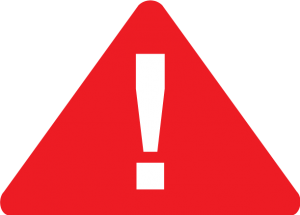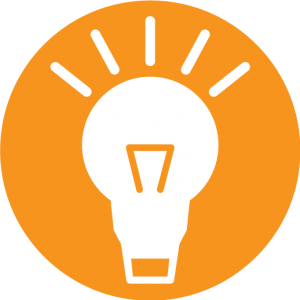Keypad Data Entry
When a menu option asks for numerical data, such as length or depth dimensions, the keypad is used to enter the data. When fractional values are involved, data may be entered as either decimals or fractions.
Decimals are the simplest. To enter a decimal simply type the whole number then the decimal point (down-arrow key) followed by the decimal part (i.e. 12.345).
Fractions are entered simply by placing the ‘/’ (located on the up-arrow key) between the numerator and denominator. To enter a pure fraction such as 1/2, simply type the numerator (in this case ‘1‘) then ‘/‘ (up-arrow key) then the denominator (in this case ‘2’). A mixed fraction (i.e. 1 3/16) is not much harder: Simply enter the whole number followed by a space (right-arrow) and then the fraction entered as above. To go back or correct an incorrectly entered number use the left-arrow.
Shortcut keys can be a faster way to get around the menus once they are learned. Shortcut keys are used primarily to access the built-in functions. The shortcuts options are printed below the numbers on the keypad (see Figure 13) and include the following:
- Projects Key will initiate the Projects menu.
- Cut Key will initiate the Cross Cut and Rip Cut menu.
- Rout Key will initiate the Edge Routing menu.
- Joint Key will initiate the Squaring and Jointing menu.
- Miter Key will initiate the Bevel and Miter Cut menu.
- Acssory Key will access a menu of any add-on accessories.
- Measure Key will allow user to measure width or length of piece.
- Repeat Key will allow user to repeat the previous operation without having to
go through all of the setup steps. - Options Key will allow access to machine settings and info.
Built-In Functions
The CarveWright machine is capable of performing most of the basic woodworking operations normally done on conventional equipment, such as a table saw, a jointer, a miter saw, a shaper, or a router. For large projects, the user who has access to the latter tools can determine which method is most advantageous in any given situation. However, for smaller projects the ease of use and the precision of cuts clearly make the CarveWright machine the preferred choice. Frequently it will be desirable – and in some cases necessary – to dress a board before carving. The built-in functions make it possible to easily perform this task with only one machine. To access the CarveWright’s various built-in functions, a menu style interface has been provided that uses the keypad and LCD display. Shortcuts to these functions are conveniently located on the CarveWright keypad. These shortcuts allow the built-in functions to be performed without the use of the CarveWright design software. The following is a brief description of each of the built-in functions:

WARNING: From the standpoint of safety, machine longevity, and output quality, it is important to follow all instructions concerning the proper bit to be used for each built-in function. For approved router bits, visit the CarveWright website.
Rip or Cross Cut
This function is provided to allow a board to be sized by width and/or length. A Rip Cut (along the grain or long axis) will size a board to the desired width; a Cross Cut (across the grain or narrow axis) will size a board to the desired length. Once Cross or Rip is selected from the Cross or Rip Cut menu, prompts are made for the desired length or width of the finished board. A Rip Cut will ALWAYS be measured from the near side of the board and a Cross Cut will ALWAYS be measured from the left end of the board as explained in Figure 12. Finally there will be a prompt to Load the 1/8” Cutting Bit (not included).

If many pieces of the same width or length are desired, simply raise the head, remove all material from the machine, load a new the board, set the sliding guide plate, lower the head, and press Repeat.
Many times it is useful to run a jointing operation after a rip to clean up the cut edge.
To joint the board after ripping it, cut the material slightly wider to allow for the jointing passes that remove ~1/64″ on each pass.
Jointing and Squaring
Jointing and squaring operations, which are often difficult on smaller boards, can be done quickly and with extreme precision using this built-in function. Squaring ensures that the corner angle of the board surface is a true 90 degrees. Jointing ensures that the edge of the board is a uniform 90 degrees to its surface. Squaring is always done on the board end. For the Joint or Square function the user will be prompted to select either Square or Joint. If Square is selected the machine will ALWAYS perform the operation to the left end of the board as explained in Figure 12. If Joint is selected the machine will ALWAYS perform the joint to the far edge of the board. After selecting the desired option the LCD will prompt the user to Load a 3/8” Jointing bit (not included).

Because the software limits the depth of the joint or square to 1/64” (.015”) the Repeat shortcut key is often used to quickly take additional passes. To repeat a jointing pass simply raise the head, re-center the board in the machine, re-set the sliding guide plate, lower the head, and press Repeat.
If it is desired to square both ends, or joint both sides, of a board, simply reverse the board in the machine and repeat the operation.
If there is a significant crown to the board, place the highest point of the crown under the cutting head. This will allow the machine to measure the highest point of the crown and will prevent the machine from taking and excessive cut. Use the Repeat shortcut key as many times as necessary to eliminate the crown.

WARNING: Use only a 3/8” straight bit for jointing or squaring. Any other bit can cause damage to the workpiece or machine and can result in serious injury.
Bevel and Miter Cuts
Bevel cuts are cut at an angle across the thickness of the workpiece. A typical bevel cut application would be seen in making small boxes where the corners are formed by two 45-degree bevel cuts. Miter cuts are cut at an angle across the width of a workpiece. A typical application would be a picture frame. Once the Miter shortcut key is pressed user will be prompted to choose either the Bevel or Miter type of cut and then the desired angle. For bevel cuts there will also be the option to Cross or Rip depending on what edge will be beveled. A Cross bevel will ALWAYS be applied to the left end of the board and a Rip bevel will ALWAYS be applied to the far side of the board as explained in Figure 12. Finally, there will be a prompt to insert a 1/4” Ball Nose bit (not included) for bevel cuts or a 1/8” Cutting bit (not included) for a miter cut.

To repeat the last Bevel or Miter cut to multiple boards, simply raise the head, remove the previous board from the machine, load a new the board, set the sliding guide plate, lower the head, and press Repeat.
Routing an Edge
The Edge Rout function allows the user to rout the edges of a rectangular board with a shaped bit. Various decorative edge effects can be achieved, depending on the available bit selection. The user will be prompted to select the edges to rout. Choices include: an End, an Edge, or All Edges. If Edge is selected the rout will ALWAYS be applied to the far side of the board and if End is selected the rout will ALWAYS be applied to the left end of the board as explained in Figure 12. Finally, there will be a prompt to select a bit from the selection menu. After the first rout operation the LCD will ask if the depth is OK.

To repeat the last Edge Rout to multiple boards, simply raise the head, remove the previous board from the machine, load a new the board, set the sliding guide plate, lower the head, and press Repeat.
Measuring a Board
The Measure Board function allows the user to measure the width or length of an existing board. Simply load a board in the typical way and press the ‘7’ (Measure) key on the keypad or use the up/down arrows to navigate from the main menu. The display will then ask for the direction the user wishes to measure.
Configuration Menu Options
The configuration menu allows the user to set project and machine settings as well as access important run-time and serial number data. To access the Configurations Menu, select the “0” (Options) key at the CarveWright Main Menu or use the up/down arrows to locate the menu and press ENTER. Use the up/down arrows to navigate to the following menu options:
- Quality (Default, Draft, Normal, Best): The Quality menu option lets the user change the carving quality of the project on the fly. Selecting default will use the settings selected in the Designer software.
- Version: The Version menu option will display the version number of the control system firmware.
- Usage Odometer: The Usage Odometer menu option will display the usage of the machine in hours and minutes.
- Show Serial Number: Selecting the Show Serial Number menu option will display the machine’s unique serial number.
- Jog Touch (Off/On): Setting this option to “On” configures the machine so that the user is required to manually set the location of the bit tip for the surface find operation. During the project setup, the machine will prompt the user to jog the bit tip over the location on the workpiece that will serve as the top surface for the project. This is particularly useful when there are already features carved into the material that prohibit the machine from automatically detecting the top surface of the material. The default setting is Off, which allows the machine to automatically find the top surface of the material.
- Calibrate offsets: The Calibrate Offsets function is a simple procedure to allow the user to fine-tune the machine for improved accuracy.
- Sensor Check: The Sensor Check menu options allow access to all of the machine’s real-time senor readings.
- Sleep After (off, 1, 5, 10, 15, 30, 45, 60 min): The Sleep After option is used to set when the electronics go into a low power sleep mode. This interval is measures from the last keypad command.
